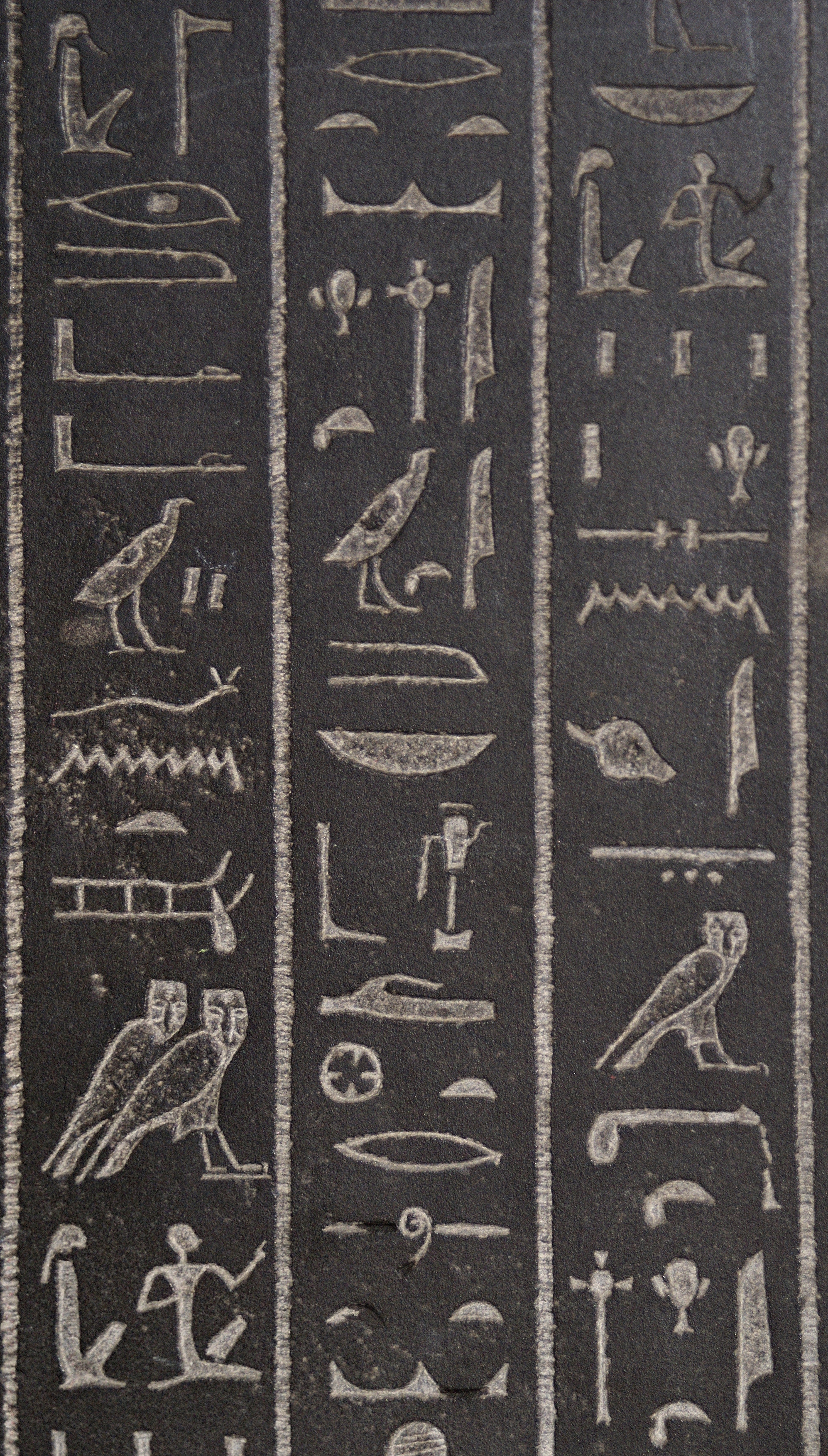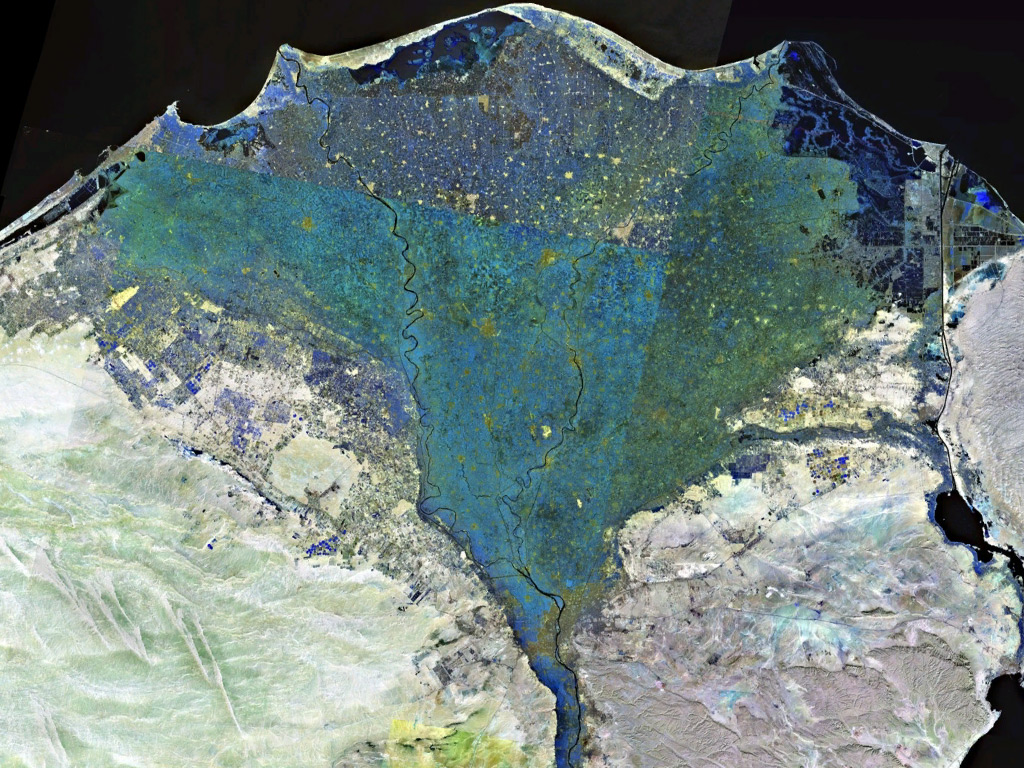|
N-red Crown (n Hieroglyph)
Deshret () was the Red Crown of Lower Egypt. It was red bowl shaped with a protruding curlicue. When combined with the Hedjet (White Crown) of Upper Egypt, it forms the Pschent (Double Crown), in ancient Egyptian called the ''sekhemti''. The Red Crown in Egyptian language hieroglyphs eventually was used as the vertical letter "n". The original "n" hieroglyph from the Predynastic Period and the Old Kingdom was the sign depicting ripples of water. The word Deshret also referred to the desert Red Land on either side of Kemet (Black Land), the fertile Nile river basin. Significance In mythology, the earth deity Geb, original ruler of Egypt, invested Horus with the rule over Lower Egypt. The Egyptian pharaohs, who saw themselves as successors of Horus, wore the ''deshret'' to symbolize their authority over Lower Egypt. Other deities wore the ''deshret'' too, or were identified with it, such as the protective serpent goddess Wadjet and the creator-goddess of Sais, Neith, who often ... [...More Info...] [...Related Items...] OR: [Wikipedia] [Google] [Baidu] |
Ancient Egypt
Ancient Egypt () was a cradle of civilization concentrated along the lower reaches of the Nile River in Northeast Africa. It emerged from prehistoric Egypt around 3150BC (according to conventional Egyptian chronology), when Upper and Lower Egypt were amalgamated by Menes, who is believed by the majority of List of Egyptologists, Egyptologists to have been the same person as Narmer. The history of ancient Egypt unfolded as a series of stable kingdoms interspersed by the "Periodization of ancient Egypt, Intermediate Periods" of relative instability. These stable kingdoms existed in one of three periods: the Old Kingdom of Egypt, Old Kingdom of the Early Bronze Age; the Middle Kingdom of Egypt, Middle Kingdom of the Middle Bronze Age; or the New Kingdom of Egypt, New Kingdom of the Late Bronze Age. The pinnacle of ancient Egyptian power was achieved during the New Kingdom, which extended its rule to much of Nubia and a considerable portion of the Levant. After this period, Egypt ... [...More Info...] [...Related Items...] OR: [Wikipedia] [Google] [Baidu] |
Narmer Palette
The Narmer Palette, also known as the Great Hierakonpolis Palette or the Palette of Narmer, is a significant Egyptian archaeological find, dating from about the 31st century BC, belonging, at least nominally, to the category of cosmetic palettes. It contains some of the earliest hieroglyphic inscriptions ever found. The tablet is thought by some to depict the unification of Upper and Lower Egypt under the king Narmer. Along with the Scorpion Macehead and the Narmer Maceheads, also found together in the main deposit at Nekhen, the Narmer Palette provides one of the earliest known depictions of an Egyptian king. On one side, the king is depicted with the bulbed White Crown of Upper (southern) Egypt, and the other side depicts the king wearing the level Red Crown of Lower (northern) Egypt, which also makes it the earliest known example of a king wearing both types of headdress. The Palette shows many of the classic conventions of Ancient Egyptian art, which must already have ... [...More Info...] [...Related Items...] OR: [Wikipedia] [Google] [Baidu] |
Quadrat (hieroglyph Block)
A quadrat block (or ''quadrate block'') is a virtual rectangle or Square (geometry), square in Egyptian hieroglyphs, Egyptian hieroglyphic text. The glyphs (hieroglyphs) can be variable in number within the ''virtual block'', though they are often proportioned according to variable standardized rules of scribe, scribal methods. The definition for the block in ''Illustrated Hieroglyphics Handbook'' by Schumann-Antelme and Rossini, is: "A 'quadrate' is a virtual square, which although not drawn, guides the hand of the scribe. Hieroglyphs must be aesthetically positioned within the quadrate and their size must be proportioned accordingly. They form groups that are pleasing to the eye and based on the laws of balance." Rosetta Stone closeup An example of five lines of text from the Rosetta Stone, (lines 9, 10, 11, 12, 13), shows a width of about six to seven virtual blocks. Line 12, (fourth line) is illustrative of the variable size, in this case the widths, of the 'virtual quadrate ... [...More Info...] [...Related Items...] OR: [Wikipedia] [Google] [Baidu] |
Rosetta Stone
The Rosetta Stone is a stele of granodiorite inscribed with three versions of a Rosetta Stone decree, decree issued in 196 BC during the Ptolemaic dynasty of ancient Egypt, Egypt, on behalf of King Ptolemy V Epiphanes. The top and middle texts are in Egyptian language, Ancient Egyptian using Egyptian hieroglyphs, hieroglyphic and Demotic (Egyptian), Demotic scripts, respectively, while the bottom is in Ancient Greek. The decree has only minor differences across the three versions, making the Rosetta Stone key to decipherment of ancient Egyptian scripts, deciphering the Egyptian scripts. The stone was carved during the Hellenistic period and is believed to have originally been displayed within a temple, possibly at Sais, Egypt, Sais. It was probably moved in late antiquity or during the Mamluk Sultanate (Cairo), Mamluk period, and was eventually used as building material in the construction of Fort Julien near the town of Rashid (Rosetta) in the Nile Delta. It was found there in ... [...More Info...] [...Related Items...] OR: [Wikipedia] [Google] [Baidu] |
Preposition
Adpositions are a part of speech, class of words used to express spatial or temporal relations (''in, under, towards, behind, ago'', etc.) or mark various thematic relations, semantic roles (''of, for''). The most common adpositions are prepositions (which precede their complement) and postpositions (which follow their complement). An adposition typically combines with a noun phrase, this being called its complement (grammar), complement, or sometimes object (grammar), object. English language, English generally has prepositions rather than postpositions – words such as ''in, under'' and ''of'' precede their objects, such as "in England", "under the table", "of Jane" – although there are a few exceptions including ''ago'' and ''notwithstanding'', as in "three days ago" and "financial limitations notwithstanding". Some languages that use a different word order have postpositions instead (like Turkic languages) or have both types (like Finnish language, Finnish). The phrase form ... [...More Info...] [...Related Items...] OR: [Wikipedia] [Google] [Baidu] |
Phoneme
A phoneme () is any set of similar Phone (phonetics), speech sounds that are perceptually regarded by the speakers of a language as a single basic sound—a smallest possible Phonetics, phonetic unit—that helps distinguish one word from another. All languages contain phonemes (or the spatial-gestural equivalent in sign languages), and all spoken languages include both consonant and vowel phonemes; phonemes are primarily studied under the branch of linguistics known as phonology. Examples and notation The English words ''cell'' and ''set'' have the exact same sequence of sounds, except for being different in their final consonant sounds: thus, versus in the International Phonetic Alphabet (IPA), a writing system that can be used to represent phonemes. Since and alone distinguish certain words from others, they are each examples of phonemes of the English language. Specifically they are consonant phonemes, along with , while is a vowel phoneme. The spelling of Engli ... [...More Info...] [...Related Items...] OR: [Wikipedia] [Google] [Baidu] |
Egyptian Uniliteral Signs
The Egyptian hieroglyphic script contained 24 uniliterals (symbols that stood for single consonants, much like English letters) which today we associate with the 26 glyphs listed below. (Note that the glyph associated with ''w/u'' also has a hieratic abbreviation.) The traditional transliteration system shown on the left of the chart below is over a century old and is the one most commonly seen in texts. It includes several symbols such as ''3'' for sounds that were of unknown value at the time. Much progress has been made since, though there is still debate as to the details. For instance, it is now thought the ''3'' may have been an alveolar lateral approximant ("l") in Old Egyptian that was lost by Late Egyptian. Some scholars believe that consonants transcribed as voiced ''(d, g, dj)'' may actually have been ejective or, less likely, pharyngealized like the Arabic emphatic consonants. A good description can be found in Allen. For other systems of transliteration, see tr ... [...More Info...] [...Related Items...] OR: [Wikipedia] [Google] [Baidu] |
Alphabet
An alphabet is a standard set of letter (alphabet), letters written to represent particular sounds in a spoken language. Specifically, letters largely correspond to phonemes as the smallest sound segments that can distinguish one word from another in a given language. Not all writing systems represent language in this way: a syllabary assigns symbols to spoken syllables, while logographies assign symbols to words, morphemes, or other semantic units. The first letters were invented in Ancient Egypt to serve as an aid in writing Egyptian hieroglyphs; these are referred to as Egyptian uniliteral signs by lexicographers. This system was used until the 5th century AD, and fundamentally differed by adding pronunciation hints to existing hieroglyphs that had previously carried no pronunciation information. Later on, these phonemic symbols also became used to transcribe foreign words. The first fully phonemic script was the Proto-Sinaitic script, also descending from Egyptian hi ... [...More Info...] [...Related Items...] OR: [Wikipedia] [Google] [Baidu] |
Nile Delta
The Nile Delta (, or simply , ) is the River delta, delta formed in Lower Egypt where the Nile River spreads out and drains into the Mediterranean Sea. It is one of the world's larger deltas—from Alexandria in the west to Port Said in the east; it covers of the Mediterranean coastline and is a rich agricultural region. From north to south the delta is approximately in length. The Delta begins slightly down-river from Cairo. Geography From north to south, the delta is approximately in length. From west to east, it covers some of coastline. The delta is sometimes divided into sections, with the Nile dividing into two main distributary, distributaries, the Damietta and the Rosetta, flowing into the Mediterranean at port cities with the same names. In the past, the delta had several distributaries, but these have been lost due to flood management, flood control, silting and changing relief. One such defunct distributary is Wadi Tumilat. The Suez Canal is east of the delta ... [...More Info...] [...Related Items...] OR: [Wikipedia] [Google] [Baidu] |
Narmer
Narmer (, may mean "painful catfish", "stinging catfish", "harsh catfish", or "fierce catfish"; ) was an ancient Egyptian king of the Early Dynastic Period, whose reign began at the end of the 4th millennium BC. He was the successor to the Protodynastic king Ka. Many scholars consider him the unifier of Egypt and founder of the First Dynasty, and in turn the first king of a unified Egypt. He also had a prominently noticeable presence in Canaan, compared to his predecessors and successors. Neithhotep is thought to be his queen consort or his daughter. A majority of Egyptologists believe that Narmer was the same person as Menes. Historical identity Although highly interrelated, the questions of "who was Menes?" and "who unified Egypt?" are actually two separate issues. Narmer is often credited with the unification of Egypt by means of the conquest of Lower Egypt by Upper Egypt. Menes is traditionally considered the first king/pharaoh of Ancient Egypt, and is identified ... [...More Info...] [...Related Items...] OR: [Wikipedia] [Google] [Baidu] |




